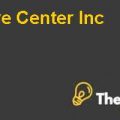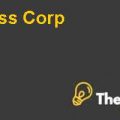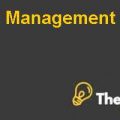Olsten Acquisition
1.) What is the strategic and economic rationale for Adecco’s acquisition of Olsten?
Strategic Rationale
There are different rationales behind company’s decisions. For Adecco’s decision of acquisition, there was a strategic rationale that was to increase its growth through acquisitions. The global strategy of Adecco was to become a top staffing service in every major market globally.
Thus, Adecco wanted to acquire companies that have diverse market. Olsten had 13% sales from IT sector as compared to only 5 percent of Adecco.
Along with that, the acquisition of Olsten would result in increased market share of the large US market for Adecco from 6% to 10%. Thus, Adecco would become the largest staffing company in the US.
Adecco’s strategic goal was to attain 20% market share in every sector so that they would be able to provide larger services to their customers. It was because of a major factor that the customers considered while choosing their staffing supplier; this included that their staffing supplier should be able to provide services in different regional and national markets so that they could get all their needs fulfilled from one place. This would reduce their cost and the need for searching a new company in every region.
Economic Rationale
The economic rationale for Adecco’s acquisition of Olsten was that it was a profitable deal. There were other bidders who wanted to buy the company at a higher price than Adecco was offering. Thus, it was important to know if the company’s worth was more than that estimated by Adecco.
The most important economic rationale behind the increasing market share of Adecco was that the historical trends suggested an increased market share and size; which would result in decreased costs of selling and recruiting and increased margins for the company.
Adecco’s historical estimates indicated a strong relationship between its profitability and national market share, as well as a relationship between growth and returns. This resulted in higher total return to shareholders. Historically, EBIT margins tended to increase with market share. Thus the companies expected the trend to continue and profit the larger companies more than the small companies.
2.) Based on Adecco’s pro forma estimates of the staffing business of Olsten in Exhibit 13, what is your estimate of total enterprise value? What is the maximum that Adecco can pay (in equity value/per share) without harming its own value?
For this calculation make the following assumptions:
a. Evaluate the valuation from the perspective of Adecco US.
b. Assume the acquisition was completed on January 1, 2000.
c. Evaluate enterprise value at the long-term capital structure of Olsten, i.e., 20% debt and 80% equity.
d. The estimated EBIAT (same as NOPAT) was calculated without deducting amortization of goodwill.
e. Assume that the Olsten’s US rivals (i.e., Kelly and Manpower) had a debt beta of 0.10. Also assume that Olsten will have the same debt beta at its target capital structure.
f. Market Risk Premium = 7.2%.
g. Suppose that Adecco would assume $750 million of Olsten debts.
Solution
With these assumptions and the forecasted value in the Exhibit 13, the free cash flow was calculated. The EBIT was essentially the value of EBITA because the amortization and goodwill was not subtracted from this value. Thus, while calculating FCF only deprecation was added back, not the amortization value. The change in property plant and equipment was considered as the capital expenditure which was also subtracted from EBITA. The change in working capital was calculated from the selected financial statement by considering current assets and current liabilities.
Terminal Value
The terminal value is calculate by multiplying the last year’s free cash flow with the long term growth rate and divided by discount rate less long term growth. The long term growth is a perpetuity calculation for this company as there is no expected maturity or decline in this service industry.
Weighted Average Cost of Capital
For calculating WACC, firstly cost of equity is calculated by adding the risk free rate to the multiplied value of beta with risk premium. The cost of capital is calculated by
(Interest of Debt * Debt share *(1 – Tax)) + (Equity share * Cost of equity) = WACC
Enterprise Value
The free cash flow is discounted at WACC. Then the terminal value is added to it in order to calculate the enterprise value. The enterprise value is the real value or worth of the equity which is being acquired.........................
This is just a sample partial case solution. Please place the order on the website to order your own originally done case solution.













